
‘A picture says a thousand words’
Similarly the skin of an individual reveals all about one’s age, health and mood. A well maintained skin not only make one look ravishing but it acts as a protective organ. We all love new born babies but simultaneously envy their skin. It is the smoothness and evenness of the child’s skin that we all crave. Acne could be an age related problem generally faced in teen years but can be found in the adults too. There are mainly two types of acne scars
1-Atrophic or depressed scars
Atrophic scars are most common on the face. A depressed scar sits below the surrounding skin. They’re formed when not enough collagen is made while the wound is healing. There are three types of atrophic scars:
- a) Boxcar: These are wide, U-shaped scars that have sharp edges. They can be shallow or deep. The shallower they are, the better they respond to skin resurfacing treatments.
- b) Ice pick: These are narrow, V-shaped scars that can go deep into the skin. They can look like small round or oval holes, like a chickenpox scar. These are the most difficult scars to treat because they can extend far under the surface of the skin.
- c) Rolling: These are wide depressions that typically have rounded edges and an irregular, rolling appearance.
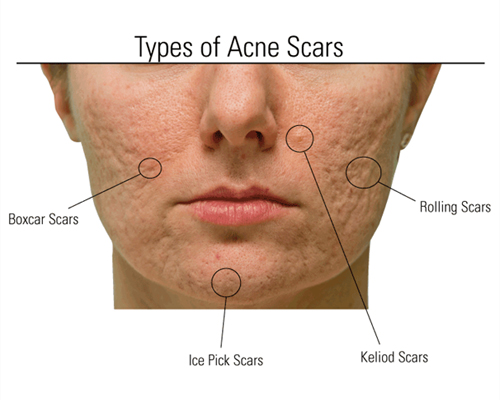
Hypertrophic or raised scars
These scars are most common with chest and back acne. They stand above the surface of the surrounding skin and are caused by too much collagen during healing.
Though acne can be treated by medicines, the acne scars that are left behind can be very distressing and troublesome which at times can result in low self-esteem. One’s self confidence comes down substantially which can alter your personality forever. At Dr.Rao’s Aesthetics we understand your agony and offer you the tailor made treatments which are suitable for you condition. Generally, it is a blend of various treatments that helps one achieve the smooth and shiny skin. The various treatments available for acne scars are:
1)Chemical Peel Treatments
In Chemical Peel treatment the exfoliating chemical is applied directly to the skin. It causes the skin to blister and eventually makes the dead skin cells to peel off. When using a higher concentration of chemicals, it emulates a skin wound causing the body to increase collagen production. The new skin is tighter and helps reduce fine lines, small scars, skin discoloration, and sun damage. Superficial chemical peels are considered as adjunctive treatments for the management of acne. Their addition to the regimen is preferred due to the quick decrease in acne scar count as well as the improvement of overall skin texture. A series of chemical peels can give significant improvement over a short period of time, leading to patient satisfaction and maintenance of results. Chemical peels with increased depth of penetration have also been used for the treatment of acne scars, either alone or in combination with other resurfacing procedures. Chemical peels are considered very safe and effective.
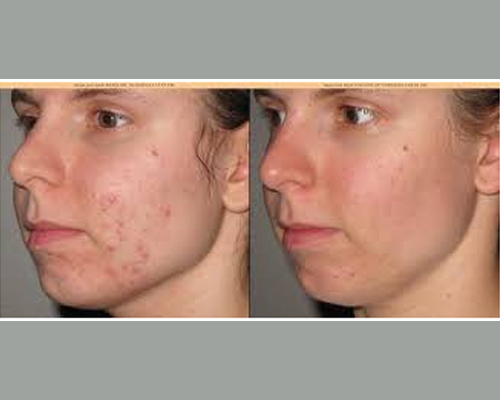
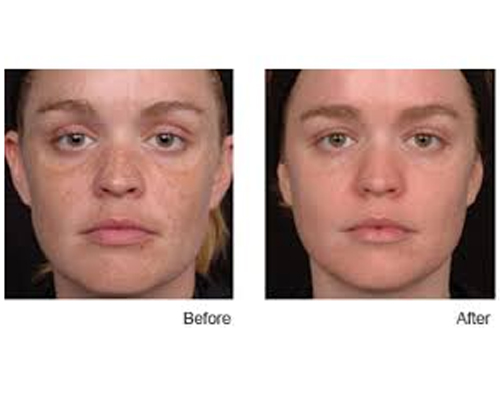
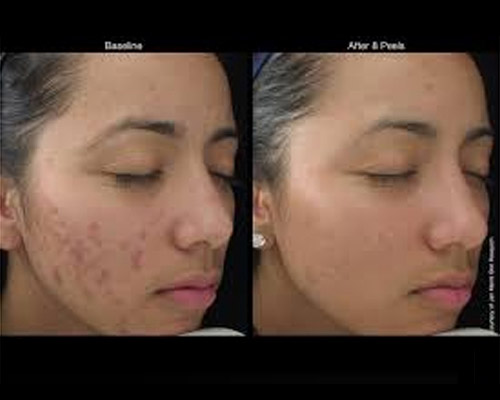
2) Microneedling
As the name suggests, microneedling uses fine needles that prick your skin. During the skin-pricking process, your skin produces more collagen in an effort to heal the small wounds from the needles.The theory is that new collagen that’s formed will help smooth out your skin’s appearance, helping to fill in fine lines, wrinkles, and scars.
According to various studies, microneedling works best for depressed — not raised — acne scars. This has to do with the collagen-inducing effects. If you have raised acne scars, you already have excess collagen in the area.Some studies have also noted that the effects of skin needling on acne scars are even better when the treatments are combined with vitamin C or PRP.
Unlike other minimally invasive skin corrective treatments, such as laser therapy, microneedling is considered safe for darker skin tones. This is because it doesn’t damage or remove the outer layer of skin. Microneedling is also considered safe for thin and sensitive skin as well.
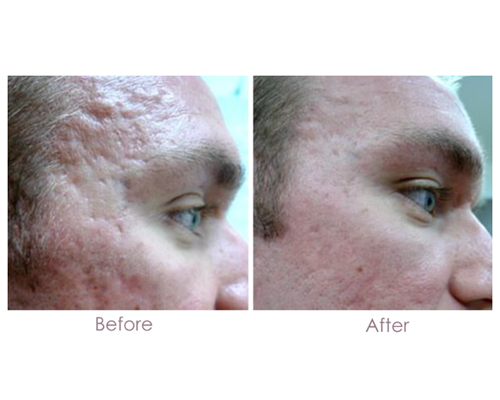
Initially, minor side effects are to be expected from this procedure. These include redness, bruising, and inflammation. However, these should clear up within a few days.
During the first few days after your microneedling procedure, you should avoid direct sun exposure and rigorous exercise. Exfoliants and alcohol-based skin products can also make side effects worse, so you should avoid these.It’s also possible to experience acne breakouts after skin needling. However, these should be mild and clear up on their own. Avoid picking at your skin, as this can lead to further scarring.
Unlike more invasive skin therapies, microneedling is considered quick. Many people choose to go back to work the day after their treatment, depending on their side effects. You can apply a lightweight powder if you want to camouflage any bruises or redness.
3) Laser Resurfacing:
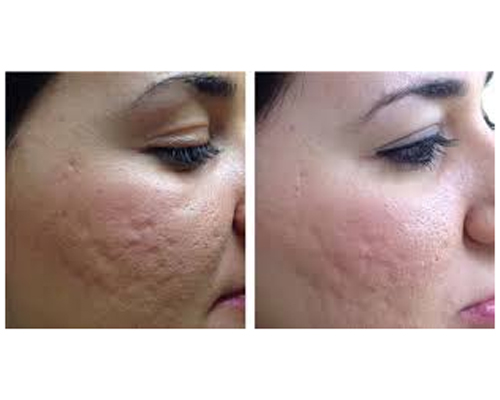
Laser resurfacing is a procedure that uses a wand-like laser instrument to remove the upper layers of skin for acne scarring. It is sometimes referred to as ‘Laser Peeling’ since it removes old skin cells in order to newer, more youthful cells.
Laser scar treatments don’t make a scar disappear. Instead, they’re designed to make a scar appear less noticeable.The body begins the process of repairing a wound after a skin injury. A scab develops over the injury to protect it from germs, and then eventually falls off. Sometimes, the skin underneath a scab is the same color as the rest of the body. However, depending on the depth of the injury, a scar often remains after a scab falls off.
These scars may fade or become lighter with time. When a scar becomes permanent, laser treatments can be used to remove the outer layer of the damaged skin’s surface. They basically smooth the skin to improve tone and appearance.
These lasers are also used to target blood vessels in the scar tissue and reduce redness. They can also penetrate the skin’s surface to stimulate the production of new skin cells.
This type of treatment improves the appearance of scars and warts. Resurfacing removes the outer layer of skin and eliminates skin cells that have been damaged at the surface level.
4) Microdermabrasion:
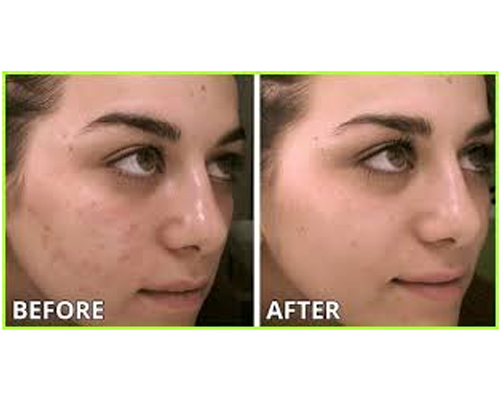
This is the process of using products with fine crystals that sand the face and remove the dead skin cells. Similar to chemical peels, it helps remove the top layer of the skin. It works best for certain types of depressed acne scars, which cause pits in the skin. This treatment only works for depressed acne scars that lie flat against the epidermis. It won’t improve ice pick scars, which are deeper than other acne scars.
Microdermabrasion may also be useful for people dealing with active mild-to-moderate breakouts. In addition to removing dead skin cells that can clog pores, the procedure also reduces excess oil (sebum) from these pores.
Part of the appeal of microdermabrasion is the lack of side effects associated with this procedure. The abrasive crystals and diamond tip wand aren’t painful and the quick recovery time, which allows you to have microdermabrasion multiple times a month. No downtime is needed, and you can resume your daily activities immediately after each session.
5) Dermafiller:
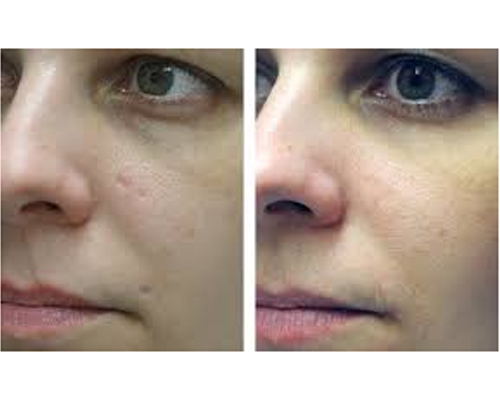
Dermal fillers are a great way to treat and potentially get rid of certain types of acne scars, being particularly effective for rolling scars and some less defined boxcar scars. They are safe and well tolerated, with great results to fill the depression associated with scars. They are excellent for volume loss caused by acne scarring.The dose required for acne scar filling varies and is dependent on the patient’s facial anatomy, the scarring and where the patient wants to get to in terms of desired results.
The dermal filler gives great results immediately and also continues to modify over the next few months. This modification and improvement occurs as a result of the technique of injection of the filler breaking up some scarred down bands, and because the product and technique stimulate collagen modification due to the stretching of the fibroblasts with the dermal filler. A topical numbing cream is usually applied to the skin to alleviate any discomfort. Ice is always used to decrease pain and to reduce the risk of bruising. So if you are concerned of feeling any pain from this procedure, you do have relief options.